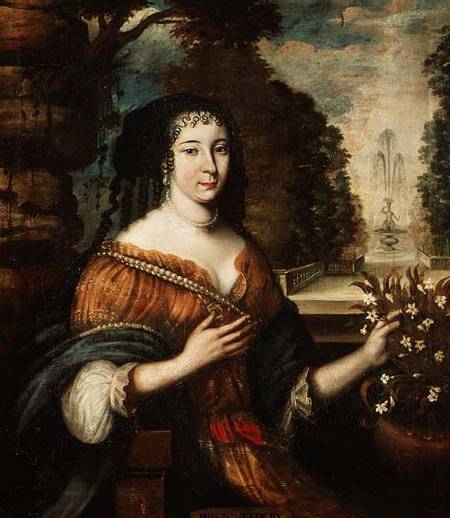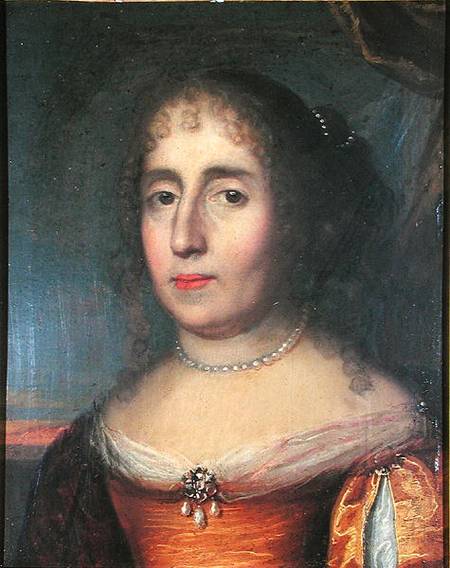<Back to Index>
- Physiologist Schack August Steenberg Krogh, 1874
- Writer Madeleine de Scudéry, 1607
- Colonel of Wehrmacht Claus Philipp Maria Justinian Schenk Graf von Stauffenberg, 1907
PAGE SPONSOR


Madeleine de Scudéry (15 November 1607 – 2 June 1701), often known simply as Mademoiselle de Scudéry, was a French writer. She was the younger sister of author Georges de Scudéry, but is generally regarded as his superior in skill.
Born at Le Havre, Normandy, in northern France, she is said to have been very plain as well as without fortune, but she was exceedingly well educated. Establishing herself at Paris with her brother, she was at once admitted to the Hôtel de Rambouillet coterie, and afterwards established a salon of her own under the title of the Société du samedi (Saturday Society). For the last half of the 17th century, under the pseudonym of Sapho or her own name, she was acknowledged as the first bluestocking of France and of the world. She formed a close friendship with Paul Pellisson which was only ended by his death in 1693.
Her lengthy novels, such as Artamène, ou le Grand Cyrus (10 vols., 1648 – 53), Clélie (10 vols., 1654 – 61), Ibrahim, ou l'illustre Bassa (4 vols., 1641), Almahide, ou l'esclave reine (8 vols., 1661 - 3) were the delight of Europe, commended by other literary figures such as Madame de Sévigné. Artamène, which contains about 2.1 million words, ranks as one of the longest novels ever written. These stories derive their length from endless conversations and, as far as incidents go, successive abductions of the heroines, conceived and told decorously.
Scudéry's novels are usually set in the classical world or the Orient, but their language and action reflect fashionable ideas of the 17th century, and the characters can be identified with Mademoiselle de Scudéry's contemporaries. In Clélie, Herminius represents Paul Pellisson; Scaurus and Lyriane were Paul Scarron and his wife (who became Mme de Maintenon); and in the description of Sapho in vol. 10 of Le Grand Cyrus the author paints herself.
In Clélie, Scudéry invented the famous Carte de Tendre, a map of an Arcadia where the geography is all based around the theme of love: the river of Inclination flows past the villages of "Billet Doux" (Love Letter), "Petits Soins" (Little Trinkets) and so forth. Scudéry was a skilled conversationalist; several volumes purporting to report her conversations upon various topics were published during her lifetime. She had a distinct vocation as a pedagogue. She could moralize — a favourite employment of the time — with sense and propriety.
Controversial in her own era, Mlle de Scudéry was satirized by Molière in his plays Les Précieuses ridicules (1659) and Les Femmes savantes (1672) and by Antoine Furetière in his Roman Bourgeois (1666).
The 19th century German writer E.T.A. Hoffmann wrote what is usually referred to as the first German language detective story, featuring Scudéry as the central figure. "Das Fräulein von Scuderi" (Mademoiselle de Scudery) is still widely read today, and is the origin of the "Cardillac syndrome" in psychology. Madeleine
survived her brother by more than thirty years, and in her later days
published numerous volumes of conversations, to a great extent
extracted from her novels, thus forming a kind of anthology of her
work. She outlived her vogue to some extent, but retained a circle of
friends to whom she was always the "incomparable Sapho." Her Life and Correspondence was published at Paris by MM. Rathery and Boutron in 1873.